Scotland is a land of myths, legends, and untamed beauty, and few places capture its wild, mystical essence quite like the Hebridean islands of Mull, Iona, and Staffa.
Nestled off the West Coast, these islands offer a delightful mix of rugged landscapes, ancient history, and wildlife-filled seascapes that transport visitors to a land that seems untouched by time.
From the brooding mountains of Mull to the spiritual serenity of Iona and the volcanic marvel of Staffa, each island has its own story to tell - a story of battles and kings, monks and Vikings, and the relentless forces of nature shaping the land over the centuries.
Whether you’re a history enthusiast, a nature lover, or simply a visitor looking for a relaxing break, this trio of islands promises an unforgettable journey through the heart of Scotland’s coastal wonders.
Mull: The Wild Heart of the Inner Hebrides
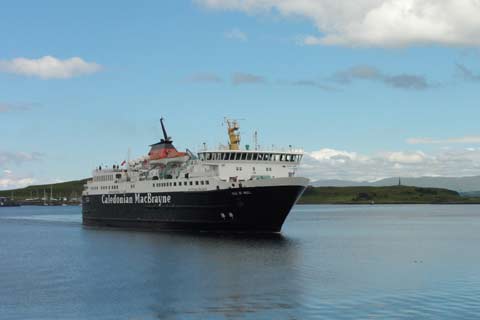
The Isle of Mull is the largest of the three islands, a dramatic sweep of moorland, mountains, and rugged coastline. It’s the kind of place where you can lose yourself in the landscape, hiking across windswept hills and feeling the weight of history pressing into the very stones beneath your feet.
The journey to Mull itself is an adventure - most visitors arrive by ferry from Oban, crossing the churning waters of the Firth of Lorn to reach Craignure, Mull’s main port. As you enjoy the crossing, look out for dolphins that often escort the ferries.
Tobermory: A Picture-Perfect Port
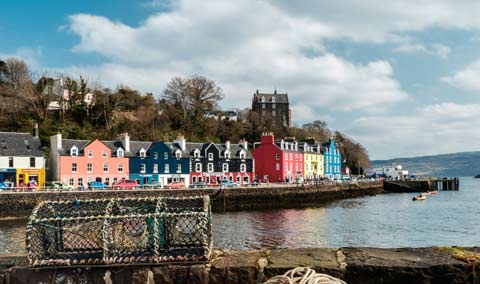
Tobermory, the island’s charming capital, is a jewel of pastel-coloured houses lining the waterfront, their reflections shimmering in the harbour like something from a fairytale.
Originally built in the late 18th Century as a fishing port, today it’s a vibrant hub filled with cosy pubs, independent shops, and the sweet scent of local seafood wafting through the air.
The town is also home to the famed Tobermory Distillery, where you can sample whisky with a smoky, peaty character unique to the island.
Legend has it that a Spanish galleon, part of the Armada, sank in the bay with treasure still lying beneath the waves - a story that only adds to the town’s maritime mystique.
Duart Castle: A Sentinel of the Past

Standing defiantly on a rocky outcrop overlooking the Sound of Mull, Duart Castle is a fortress of stone and shadow, a relic of Scotland’s powerful clans. Built in the 13th Century as the ancestral seat of the Clan MacLean, the castle witnessed numerous battles and sieges, including the attack by Argyll government troops in 1647.
Duart Castle offers visitors historic exhibits, stunning coastal views, and beautifully restored rooms. Highlights include the Great Hall, dungeons, and the Clan Maclean Museum.
The views from the battlements stretch across the water, where the distant peaks of mainland Scotland rise like sentinels. It’s easy to imagine Viking longships or war galleys slicing through the waves below, history’s presence felt in every gust of wind.
Wildlife and Wilderness
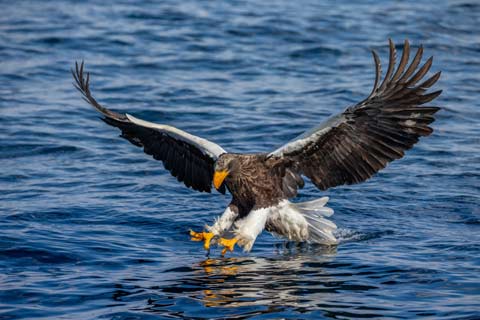
Mull is a haven for wildlife enthusiasts. The island is one of the best places in Scotland to spot white-tailed sea eagles - majestic birds with an almost mythical presence, soaring high above the sea cliffs. Red deer roam the moors, while otters can be glimpsed slipping through kelp-covered shores.
The waters surrounding Mull are rich with life, and boat trips offer the chance to see seals, porpoises, and even minke whales breaking the surface.
For the intrepid, a hike up Ben More, Mull’s highest peak, is a challenging but rewarding endeavour. The summit offers breathtaking island vistas, and on a clear day, the summit of Ben Cruachan can be seen.
Iona: The Sacred Isle
A short ferry ride from Mull’s western coast brings you to the Isle of Iona, a place of profound spiritual significance. Just three miles long and barely a mile wide, Iona is small but mighty in history.
It was here, in 563 AD, that St. Columba and his twelve companions arrived from Ireland, establishing a monastery that would become one of the most important religious sites in medieval Europe.
Iona Abbey: A Beacon of Faith
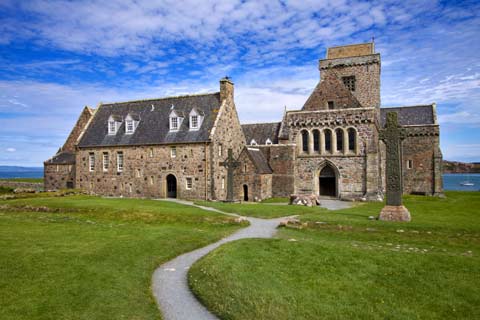
The heart of Iona is its abbey, a place steeped in the echoes of prayer and contemplation. The original monastery was repeatedly plundered by Viking raiders, but its legacy endured. The present-day abbey, restored in the 20th Century, is a place of quiet beauty, its stone walls imbued with a deep sense of peace.
Inside, the air is cool and still, and the medieval carvings whisper of devotion across centuries. Outside, the Reilig Òdhrain cemetery is said to be the final resting place of 48 Scottish kings, including, according to legend, Macbeth himself.
Whether the stories are true or not, there is an undeniable gravity to this sacred ground.
The Magic of Iona’s Shores
Beyond the abbey, Iona offers white-sand beaches and turquoise waters that seem almost otherworldly. St. Columba’s Bay, where the saint is believed to have first landed, is a place of pilgrimage for those seeking solace and reflection. The island’s tranquillity invites slow wandering, the scent of sea air mingling with the wildflowers that dot the landscape.
Many visitors describe Iona as having a unique energy, a feeling of stepping into a different world where day-to-day worries just melt away.
Staffa: The Island of Columns and Caves
If Mull is wild and Iona is serene, then Staffa is pure, raw wonder. A volcanic island rising out of the Atlantic like a fortress of basalt, Staffa is famed for Fingal’s Cave, an awe-inspiring sea cavern formed by hexagonal columns of cooling lava.
Fingal’s Cave: A Cathedral of Nature

Approaching Staffa by boat, the first thing that strikes you is the perfection of its basalt cliffs. These towering natural basalt columns, formed by ancient volcanic activity, seem almost too precise to be real - yet they are a testament to the wonders of nature.
Legend has it that the giant, Fingal, built the Cave as part of a connection between the Giant’s Causeway in Ireland and Scotland so he could confront the Scottish giant Benandonner. The Cave’s unique acoustics are said to echo Fingal’s majestic voice.
Orchestral magic
The sound of the waves that roll into its cavernous depths creates an eerie, echoing symphony of sound so haunting and beautiful that it inspired Felix Mendelssohn’s famous overture, The Hebrides.
The Cave’s Gaelic name, Uamh-Binn, means “The Melodious Cave,” an apt description for this natural amphitheatre of sound and light.
Puffins and Sea Life
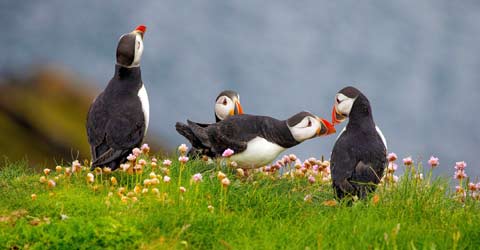
Staffa is also a paradise for birdwatchers, especially during the summer months when puffins nest on its cliffs. These comical, colourful seabirds are delightfully fearless, allowing visitors to get surprisingly close.
The island’s remoteness makes it a haven for other seabirds too, including guillemots and razorbills.
The surrounding waters, deep and mysterious, are home to pods of dolphins and even basking sharks, creatures that glide through the depths like ghosts of the sea. Staffa feels like a world apart, where nature reigns supreme, untouched by the trappings of mankind.
Mull, Iona and Staffa Tour from Scottish Tours
To visit these delightful islands, all you need to do is hop aboard the 4-day Mull, Iona and Staffa tour, which operates weekly from Edinburgh between June and August.
You can venture further afield to explore many of Scotland’s islands with Scottish Tours, including Arran, Barra, Harris, Islay, Lewis, Orkney and the Shetlands.
Check our programme of Scotland Tours and book today.
Photo credits: Shutterstock

